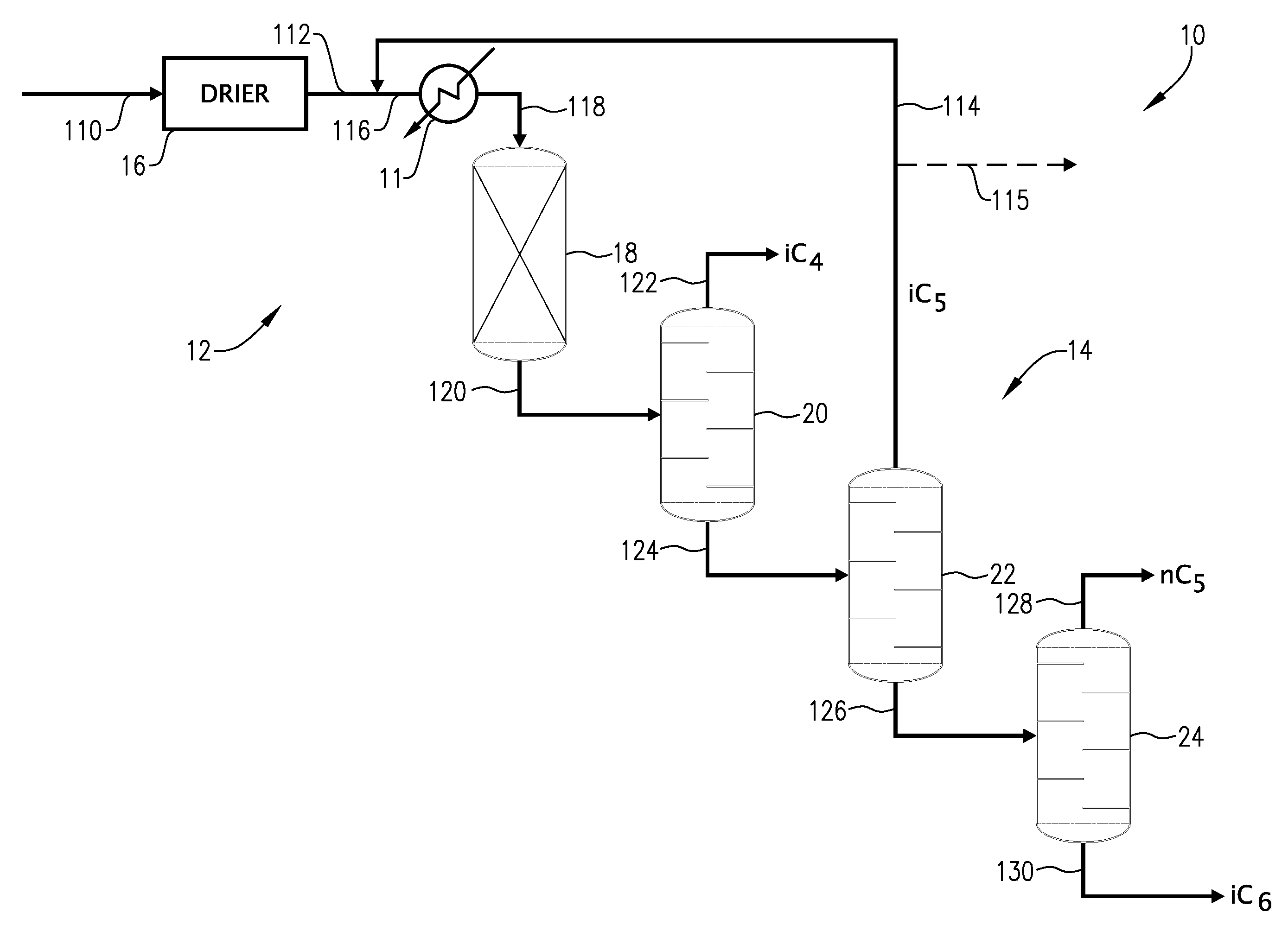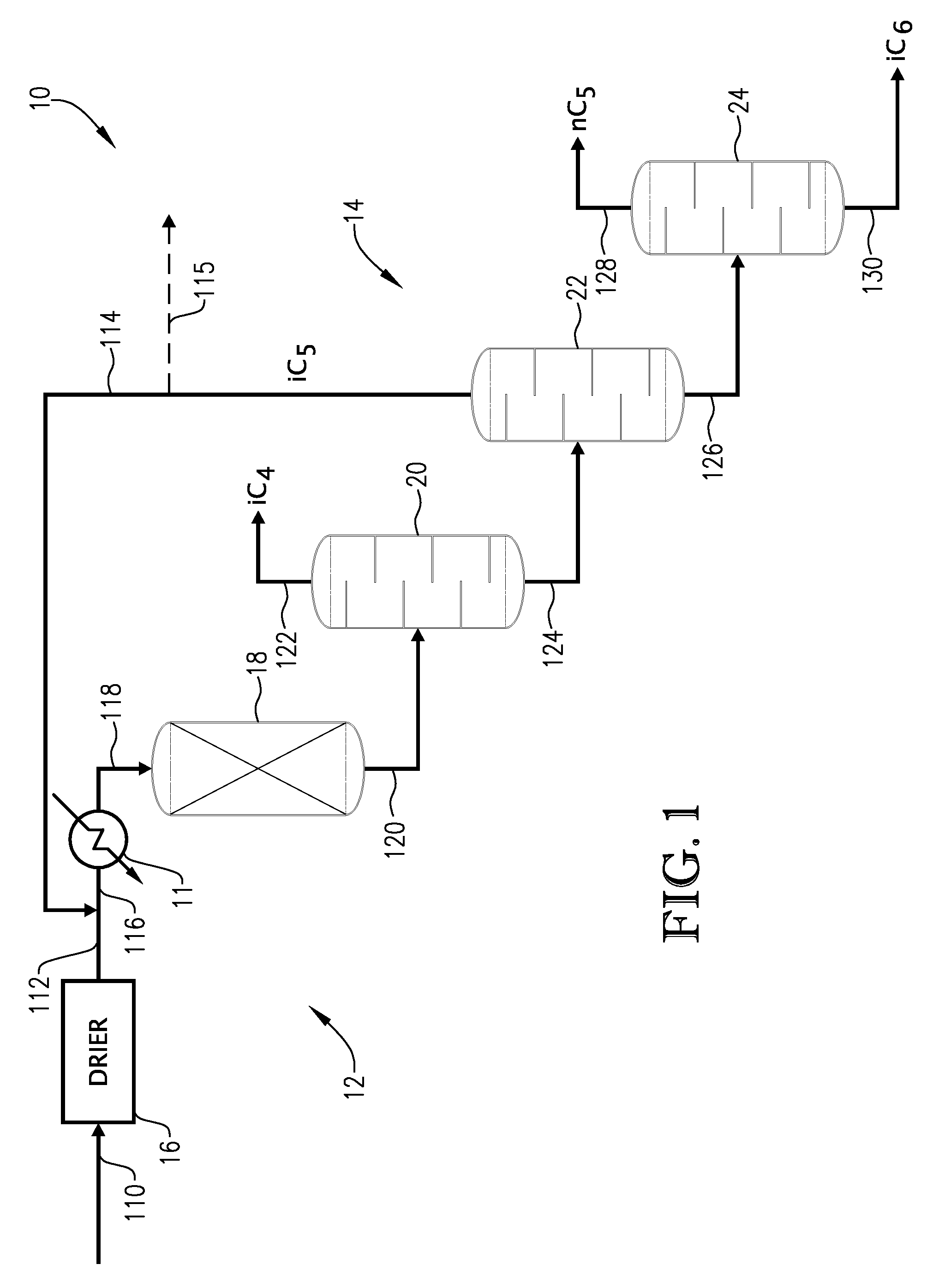Disproportionation of isopentane
a technology of isoparaffin and disproportionation, which is applied in the direction of hydrocarbon by saturated bond conversion, thermal-pv hybrid energy generation, photovoltaic supports, etc., can solve the problems of reducing the amount of isopentane and other volatile components that can be successfully blended into the finished product, reducing profitability, and stricter rvp limits
- Summary
- Abstract
- Description
- Claims
- Application Information
AI Technical Summary
Benefits of technology
Problems solved by technology
Method used
Image
Examples
example 1
Preparation
[0033]A disproportionation catalyst was prepared by first combining 20 grams of ground aluminum chloride, 15 grams of Davison SI 1102 silica dioxide, and 200 mL of toluene to form a slurry. Next, the slurry was refluxed at 390° F. for three hours. Excess aluminum chloride was removed by decanting the slurry and extracting the remaining mixture with methylene chloride. The resulting material was then dried in a vacuum oven to a dark red color.
example 2
tionation Trials
[0034]The catalyst composition prepared in accordance with the procedure described in Example 1 was tested for effectiveness as an isopentane disproportionation catalyst. Four trials were conducted wherein 11.8 grams of disproportionation catalyst were charged to a fixed bed, downflow reactor and contacted with an isopentane feed stream having a volumetric flow rate of 10 mL / hr under various reactor temperatures and pressures. Table 1, below, summarizes the disproportionation reaction conditions for each of Trials 1 through 4.
TABLE 1Disproportionation Reactor Conditions for Trials 1 through 4REACTORTRIALCONDITIONS1234Reactor Temperature, ° F.210300345390Reactor Pressure, psig300400400400
[0035]Tables 2 through 5 below summarize the results of Trials 1 through 4. Average isopentane conversion over five hours of total on-stream time (TOS) is reported for each trial.
TABLE 2Isopentane Disproportionation Results for Trial 1Product TOSFeed1 hr2 hr3 hr4 hr5 hrCompositionwt %...
PUM
| Property | Measurement | Unit |
|---|---|---|
| weight percent | aaaaa | aaaaa |
| weight percent | aaaaa | aaaaa |
| temperature | aaaaa | aaaaa |
Abstract
Description
Claims
Application Information
 Login to View More
Login to View More - R&D
- Intellectual Property
- Life Sciences
- Materials
- Tech Scout
- Unparalleled Data Quality
- Higher Quality Content
- 60% Fewer Hallucinations
Browse by: Latest US Patents, China's latest patents, Technical Efficacy Thesaurus, Application Domain, Technology Topic, Popular Technical Reports.
© 2025 PatSnap. All rights reserved.Legal|Privacy policy|Modern Slavery Act Transparency Statement|Sitemap|About US| Contact US: help@patsnap.com


